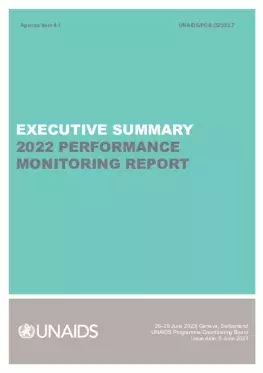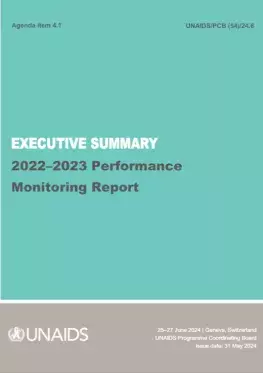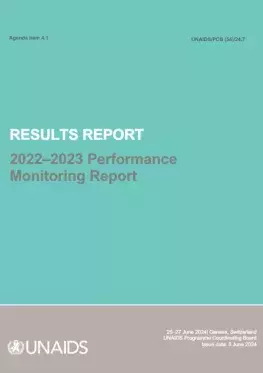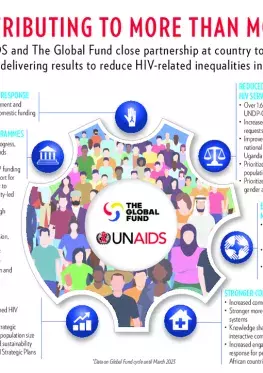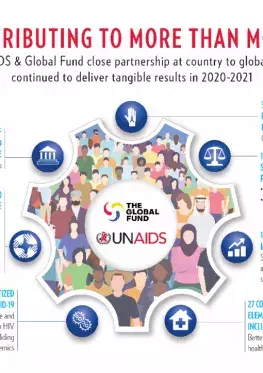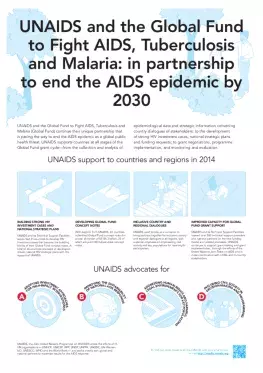The Joint Programme provided extensive support to countries to increase domestic financing for their national HIV responses and for their overall health systems. Together with PEPFAR, the Global Fund and other partners, the Joint Programme held a special meeting with 12 African ministers of finance to increase their support for additional domestic spending on HIV. Other efforts went towards supporting numerous countries to develop social contracting mechanisms to sustain community-led HIV responses, which led to social contracting action plans in three countries.
The Joint Programme contributed to the mobilization of essential external resources for HIV and health by intensifying its support to countries to access and optimize Global Fund resources after the Fund’s successful replenishment conference. This included the development and submission of 47 high-quality prioritized funding requests worth US$ 5.9 billion to the Global Fund (Round 7), as well as intensive direct support to 15 countries for integrating human rights-related and gender-transformative approaches. Overall in2022-2023, the Joint Programme supported 80 countries to include evidence-informed HIV investments across their Global Fund grants, for example through guidance and technical support, coordinating mechanisms, strategic information costing, transition and sustainability.
The Joint Programme strengthened the efficiency and effectiveness of HIV responses and health systems. The World Bank supported 11 countries in undertaking HIV and TB allocative efficiency studies and it aided HIV allocative efficiency analyses in another six countries. Substantial support from the Joint Programme went towards assisting more than 100 countries to explore strategies for integrating digital health platforms to improve reach, efficiency and effectiveness of their HIV interventions.
With Joint Programme support, a record 13 countries conducted National AIDS Spending Assessments. An increasing number of those assessments are now capturing highly granular information that can guide investments and resource allocations by national governments and international donors. A database on HIV commodity prices in low- and middle-income countries is also available, along with updated estimates of resource availability for the HIV response.
The Joint Programme continued to encourage innovation in the financing of HIV responses and broader health systems. For example, some 17 countries were supported by UNDP to assess the possible imposition of health taxes (e.g., on alcohol, tobacco and sugary beverages) to generate additional funding for health.
New analysis supported by UNAIDS, “A triple dividend: fully financing the HIV response in Africa”, assessed the multifaceted impact of a fully financed HIV response. A new agenda and framework for shaping the long-term sustainability of AIDS responses is being rolled out with technical guidance to countries.


